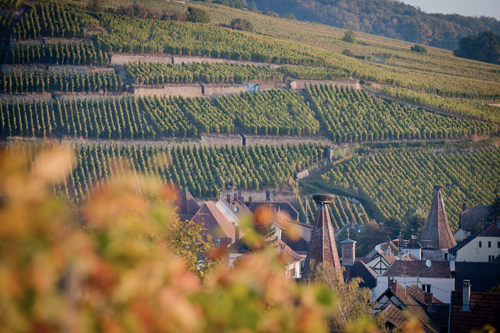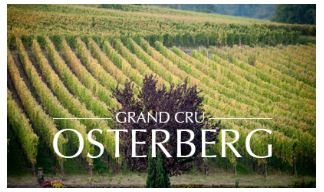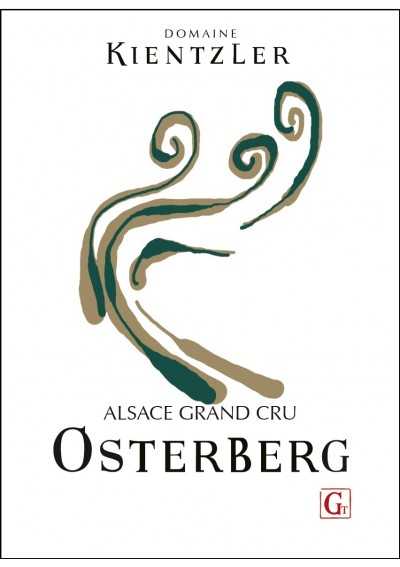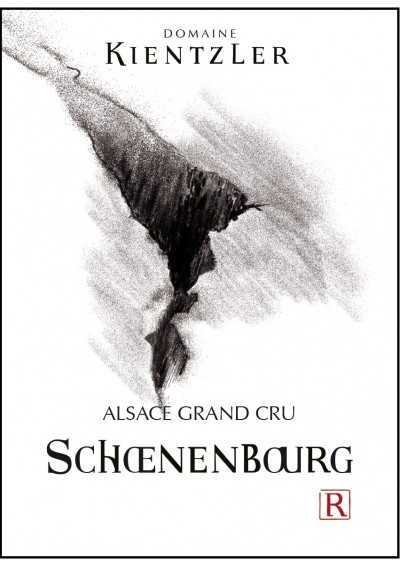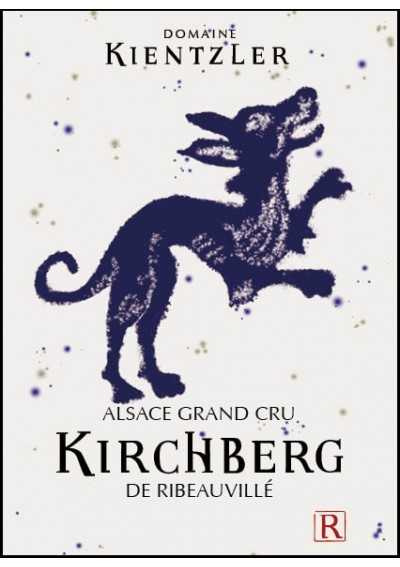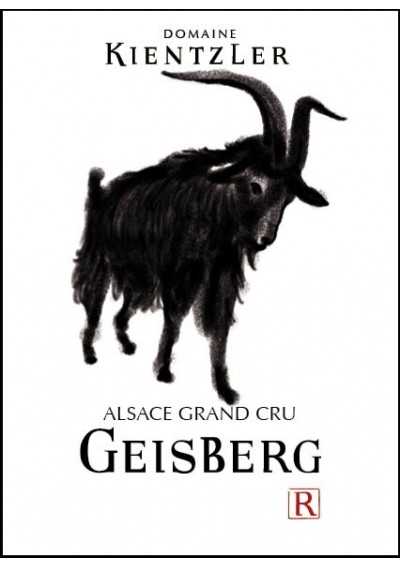
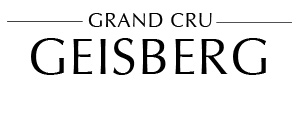
The Geisberg Grand Cru consists of steeply sloped terraces separated by two to three metre high walls. The vines are planted in direction of the slope and head South. The dominant soil is calcareous sandstone with a streak of marl. The geological unity is perfect.
The cool winds at night (Tahlwendala) leaving the valley enable a slow ripening of the grape. Moreover, the Vosges mountains protect the vines from damp winds coming from the North-West.
The Geisberg has one of the smallest areas but is also one of the most homogeneous Grand Crus of the region.
Its vines are dedicated mainly to the production of Riesling (98%)
At the André Kientzler vineyard, the high planting density (6500 plants per hectare) is an important competitive factor which allows the vineyard to fully reveal its heritage.
Moreover, these demanding grounds require permanent labour work.
What characterises the Geisberg Grand Cru ?
The Geisberg Grand Cru is the land of choice for Riesling. It provides magnitude and complexity with a unique depth and mineral dimension. It is also characterised by its exceptional aging potential ranging from a minimum of 20 to 25 years to much more for outstanding vintages.
STORY
In Winter 2003, we got together with a few winegrower friends. This was an opportunity to do a so-called vertical tasting (tasting several vintages of the same wine) of our Geisberg Riesling. The older bottles dated back to 1959, 1937 and even 1921. We were amazed by the rare complexity and incredible youth of each bottle. This remains to this day one of our best memories concerning wine tasting…


